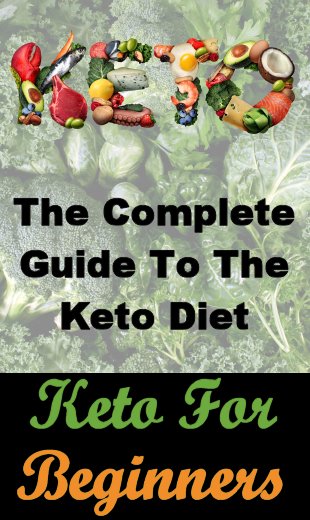24 Of The Best Natural Antibiotics
Before we start, let’s get a definition out of the way: an antibiotic is simply a substance that kills bacteria.
Antibiotic History & Statistics
The most well-known antibiotic, penicillin, was first discovered back in 1928 by Alexander Fleming, and since then, there have been a whole horde of new ones.
The problem is, they are over-prescribed. According to the USA’s Centers For Disease Control (CDC), “269 million antibiotic prescriptions were distributed to patients through outpatient pharmacies in 2015.”
And current figures are likely to be even higher.
Incredibly, it is estimated that around one third of those prescriptions are unnecessary. For example, some prescriptions are written for viral infections even though antibiotics are only designed to kill bacteria.
Antibiotic Resistance
This over-prescription of antibiotic drugs is causing serious repercussions, primarily what is known as antibiotic resistance.
Bacteria are capable of evolving extremely rapidly, and many are now able to defend against antibiotics.
This fascinating short video, from Harvard Medical School, shows just how fast this can happen:
The most well-known antibiotic-resistant bacteria are Methicillin-resistant Staphylococcus aureus (MRSA), which was first discovered in Britain in 1961), but there are plenty of other, including some varieties of:
- Campylobacter
- Clostridium difficile
- E. coli
- Neisseria gonorrhoeae
- Salmonella
The CDC estimates that, per year, “at least 2 million people get an antibiotic-resistant infection, and at least 23,000 people die.”
Problems With Prescription Antibiotics
As if antibiotic resistance weren’t bad enough (and it is), there are other common side-effects with taking prescription antibiotics, as there are with most prescription drugs, including:
- Anaphylaxis (e.g. difficulty breathing, facial swelling)
- Death
- Diarrhoea (including loose stools and, more rarely, bloody diarrhoea)
- Dizziness
- Eye tics
- Flushing
- Headache
- Hearing loss
- Increased heart rate
- Lethargy
- Loss of appetite (and even anorexia)
- Nausea
- Oral thrush
- Peripheral neuropathy
- Phlebitis
- Photosensitivity
- Renal toxicity
- Serum sickness
- Skin rashes
- Stevens-Johnson syndrome
- Stomach cramps
- Vaginal yeast infections
- Vomiting
As you can see, potential side-effects from prescription antibiotics range from the mild to the severe to the fatal.
Of course, some of the above reactions are more common than others, and different antibiotics have different risks and side-effects, but I’m sure you get the overall point – any prescription drug, including antibiotics, can cause additional and possibly serious or even lethal problems.
Natural Antibiotics
You’ll be pleased to know that there is some good news – there are plenty of easily available natural antibiotics that have been proven effective against some bacteria, and these include:
- Apple Cider Vinegar. I’ve already written about the benefits of ACV, but for here, suffice it to know that one of its many properties is as a natural antibiotic.
- Cinnamon. This aromatic spice has both antibacterial and antioxidant properties. There are two main types – cassia, which is generally regarded as being less pure than the variety that is native to Madagascar and Sri Lanka, so try to obtain the latter if you can.
- Colloidal Silver. While you can apply this to your skin, or gargle with it, you do need to be careful with this one because it can cause an imbalance in your gut bacteria if you have too much.
- Echinacea. Used for more than 300 years, this plant contains compounds that work against both bacteria (e.g. Haemophilus influenzae, Legionela pneumophila, and Streptococcus pyogenes) and fungi. While you can get this in capsule form, I prefer to get my echinacea via a herbal tea infusion.
- Eucalyptus. You’ll probably be familiar with this as a relief from colds and sore throats, but it has many other properties, acting as an immune system stimulant, anti-inflammatory, antioxidant, analgesic, and anti-spasmolytic.
- Garlic. It is a sulphur-containing compound, called allicin, that is the active ingredient in garlic, and it is activated when raw garlic is chewed or crushed. So, while adding garlic to cooked foods adds flavour and can help a bit, you’ll receive the greatest benefit by chewing around three cloves of raw garlic per day. Crushing them and letting them stand for 10 – 15 minutes can take some of the overpowering taste and smell away, and chewing on a bit of parsley after eating the garlic can also help.
- Ginger. This common spice is often used to soothe digestive problems, but it has antibiotic properties too, being effective against strains such as E. coli and Streptococcus.
- Goldenseal. Used for centuries against respiratory infections as well as hay fever, it can also help with bacterial digestive infections.
- Grapefruit Seed Extract. Just a few drops of a concentrated grapefruit seed extract can be as powerful as topical antibiotic products. Just be careful when you buy this that it’s not been mixed with a bunch of dangerous chemicals.
- Horseradish. This pungent condiment, which has been used for over 500 years, is considered by some to be the most potent natural antibiotic, but it’s important to eat it raw because cooking can reduce it benefits.
- Lemongrass. This herb has many medicinal uses (e.g. fever, stomach disorders), but it’s an anti-inflammatory and antibacterial agent too.
- Manuka Honey. This is honey made from the manuka tree, which is native to New Zealand and is from the myrtle family. It is sometimes referred to as medical-grade honey, and its health benefits have been known about for a long time. More recently, it has been found to kill MRSA.
- Myrrh. This gum has been used for centuries (even as part of the Egyptian mummification process), and like other natural antibiotics on this list, it’s effective against both E. coli and Salmonella.
- Olive Leaf Extract. This is another popular herbal remedy, made from olives, that can help with inflammation reduction, but it’s also been shown to reduce the growth of bacteria such as E. coli and Salmonella.
- Onion. A relative of garlic (see above), onion too has many benefits, both topically and when ingested (preferably raw). Examples include fever reduction and nausea relief, and it also has antibacterial properties.
- Oregano Oil. Most people will know oregano as one of the standard herbs in pizza sauces and toppings, but two of its compounds, carvacrol and thymol, are also powerful antibiotic agents, particularly for digestive issues, pneumonia, and UTIs.
- Pau d’Arco. Native to South America, this plant has been used for centuries as a natural antibiotic, something that was scientifically confirmed in a 2010 study.
- Red Pepper. The spicy component of red peppers (e.g. habaneros), capsaicin, is also what helps kill of bacteria. However, they also contain quercetin, which is also capable of doing the same job.
- Rosemary. Used for centuries, this popular herb is effective against bacterial strains such as Salmonella.
- Tea Tree Oil. This oil, which is derived from Melaleuca alternifolia, is popular as a natural way to treat skin infections. It has also been shown to be effective against MRSA.
- Thyme. This is another popular herb used in cooking (do you see a theme here?) that has antibacterial properties, especially against E. coli, Enterococcus faecalis, and Salmonella.
- Turmeric. I’ve talked about this spice in various other articles, and that’s because it’s another of nature’s powerhouse plants. It’s related to garlic (see above), and while it’s commonly used in cooking to impart both colour and flavour, it has numerous health benefits, thanks to the curcumin it contains, including antibiotic uses.
- Virgin Coconut Oil. Its saturated fats have antibacterial, antifungal, antiparasitic, and antiviral properties that, together, can also help build up your immune system.
- Vitamin C. Found in all sorts of fruits and vegetables (e.g. berries, broccoli, kiwi fruit, lemons, oranges, peas), this is one of the most important nutrients our bodies need. And while it can be directly active against bacteria, it also stimulate the body’s natural antibody response.
Caveats
One of the known problems with prescription antibiotics is that they are indiscriminate – they kill of the “bad” bacteria as well as the “good” bacteria.
While there are those who claim that some of the above natural antibiotics (e.g. garlic) only kill bad bacteria, I would be careful with this.
I would recommend taking prebiotics and probiotics, as you should after taking any type of antibiotics, to help rebuild your microbiome. You can find out more about prebiotics and probiotics here.
Conclusion
As you can see, the pharmaceutical industry does not have a monopoly on antibiotics – nature has provided many of them for centuries.
However, always make sure you try to buy the best quality food (including herbs and spices) you can, and preferably organic where possible.
Additional Resources
These are suggestions for those who wish to delve deeper into any of the above:







